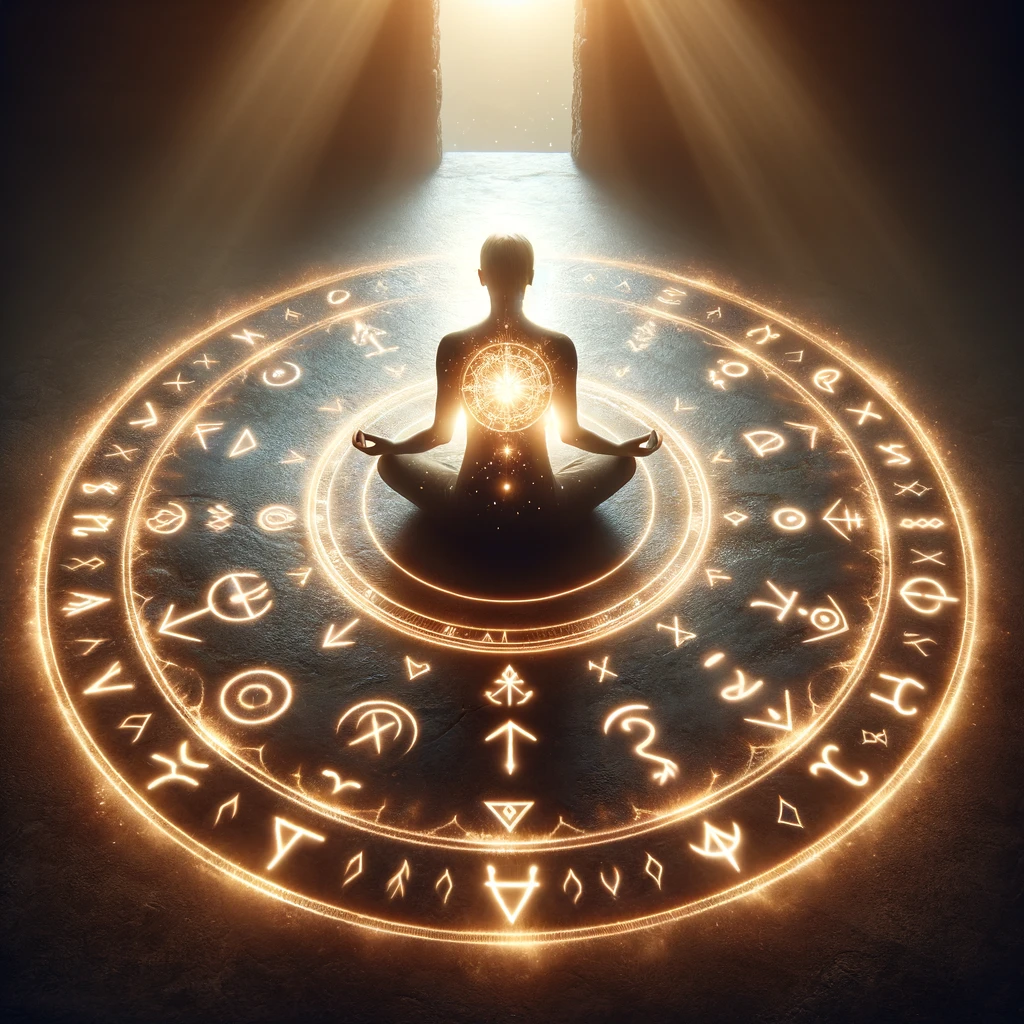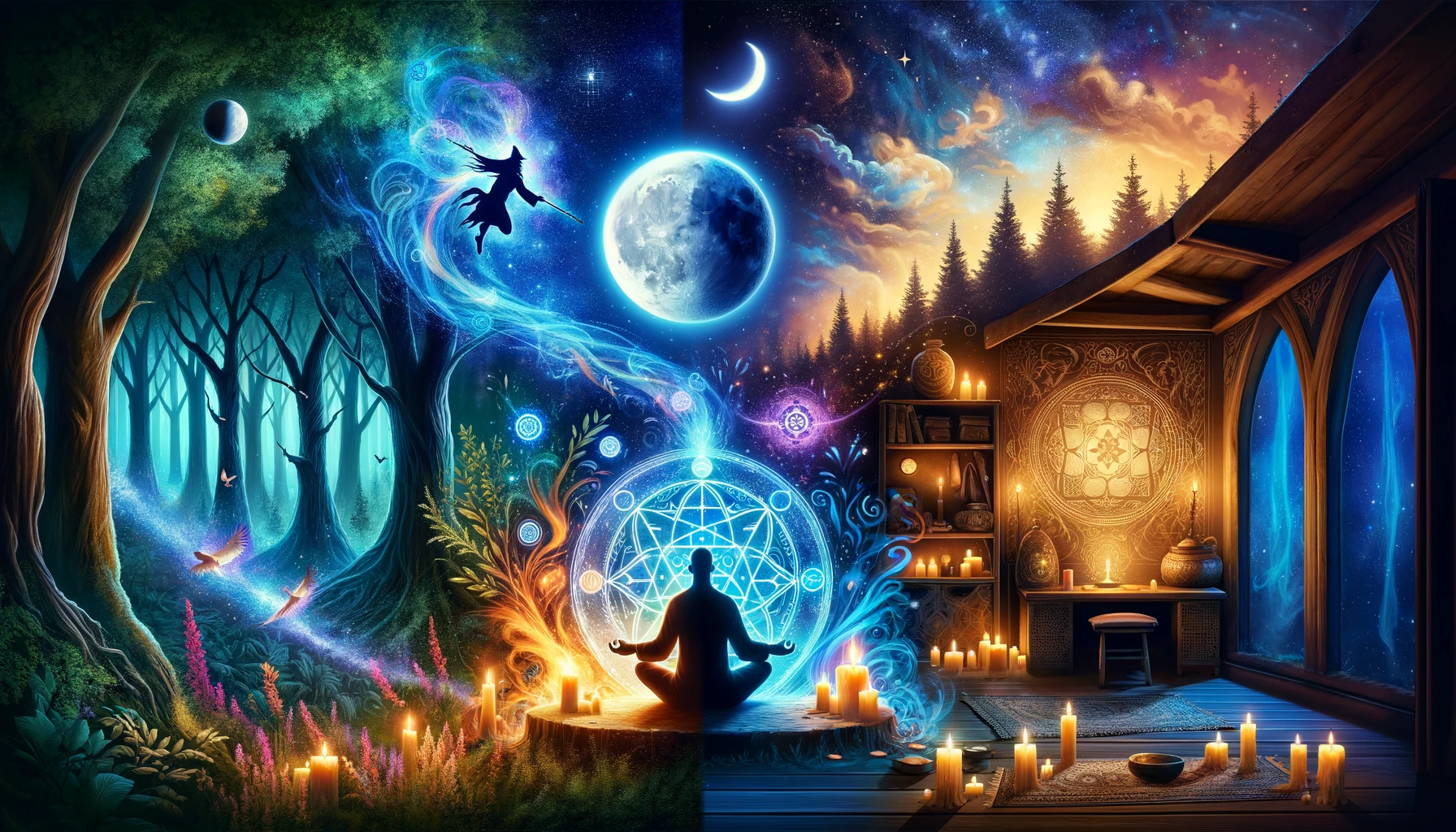In magical practices and occultism, there are two main types of rituals – evocation and invocation. While both involve connecting with spiritual forces, there are some key differences between evocation and invocation. Understanding when to use each ritual and how they work can help improve your magical workings.

What is Evocation?
Evocation is the act of calling upon or summoning a spirit, demon, deity or other supernatural being and bringing its presence and energy into the practitioner’s space. The purpose of evocation is typically to gain knowledge, power or assistance from the entity.
In evocation rituals, the practitioner does not seek to fully embody or merge with the entity. Instead, they call the spirit into their space and work to command it or negotiate with it to complete tasks or provide information. Evocation establishes the practitioner as the one in control.
Some common reasons for evocation include:
- Asking a spirit for knowledge or hidden information
- Calling upon a deity for their blessing or power
- Summoning a demon or supernatural helper to assist with a magical working
- Defense against dark spirits or exorcism rituals
Evocation requires strong willpower and authority from the practitioner as they are summoning an outside force into their space. Preparations like protective circles, banishing rituals and sigils of control help keep the evoked entity contained.
Examples of Evocation
- Invoking a demon or spirit to visible appearance in order to command it to reveal knowledge or carry out a curse
- Performing a ritual to call upon angels or deities and asking them to lend their power
- Summoning familiars or supernatural servants and commanding them to assist with magic
What is Invocation?
Invocation is the act of calling upon and uniting yourself with a spirit, deity, supernatural power or archetype. The purpose is to temporarily embody its energy and unite your consciousness with its divine presence.
Instead of summoning an outside force, invocation focuses on awakening a transcendent aspect deep within yourself or the universe. You allow divine energy to manifest through you, lending its attributes and power. The practitioner seeks to become one with the invoked being.
Some common reasons for invocation include:
- Inviting a deity into your body and consciousness to fully embody their energy
- Accessing your higher self or awakening your psychic/magical potential
- Charging yourself with the archetypal forces of elements like earth, air, fire, water
- Seeking spiritual revelation and union with divine energy
Invocation requires openness and the ability to raise your consciousness to a transcendent level. Preparations like meditation, chanting, visualization and trance work help achieve gnosis and become a clear vessel.

Examples of Invocation
- Embodying a deity like Thor and taking on his strength and warrior energy for a ritual
- Chanting elemental invocations to stir the forces of water or fire within you
- Visualizing and uniting with your higher genius or astral guide
- Inviting angelic energy into your spirit to attain divine wisdom and blessings
Key Differences Between Evocation vs Invocation
| Evocation | Invocation |
|---|---|
| Calls spirit/deity/entity into the practitioner’s space | Merges practitioner’s consciousness with deity/energy |
| Establishes control & authority over the summoned being | Allows deity/energy to infuse the practitioner |
| Summons outside force from its natural realm | Invites transcendent aspect into your inner landscape |
| Uses protections like circles, banishing, bindings | Uses meditation, visualizations and chants to connect |
| Goal is to negotiate with or command the entity | Goal is spiritual ascension and embodiment |
While both rituals work with supernatural forces, evocation and invocation take different approaches. Understanding when to harness an external power vs. awaken your inner divinity is key to successful magick and personal growth on the occult path.
How to Perform Evocation vs Invocation in Rituals
Now that we understand the core differences between evocation and invocation, let’s look at how to actually apply them in your rituals:
Evocation Ritual Steps
- Purify and prepare your ritual space, cast a protective magic circle to contain the evoked entity. Use banishing rituals if needed.
- Place the sigil/seal of the spirit or deity you are summoning on your altar and gather any offerings.
- Project authority and call the being into manifestation with firm intent, using chants, prayers or spells.
- Once summoned, communicate your commands, questions or desires clearly and directly.
- Listen closely for messages and information from the evoked entity.
- Thank the spirit for its assistance, then bid it farewell and close the ritual space.
Invocation Ritual Steps
- Purify yourself through meditation, grounding, chanting or other gnosis techniques before ritual.
- Create an open, clear vessel for embodiment by aligning your chakras and energy.
- Recite invocations and prayers to establish a divine connection and call the energy into yourself.
- Visualize the deity or transcendent aspect merging with your spirit. Become its embodiment.
- Take on the attributes, powers and revelations of the invoked force.
- Take time to come back to your normal consciousness and close the ritual. Record any messages or insights received.

Tips for Safe and Effective Evocation & Invocation
- Know your own limits and capacities. Don’t overextend yourself with entities or energies you aren’t prepared for.
- Construct rituals carefully and deliberately. Each aspect should have purpose and power.
- Cleanse your energy before and after rituals to avoid attachment or negative influences.
- Practice with lower-risk beings and work your way up as your skills grow.
- Pay close attention to messages, signs and intuition during the rites.
- Keep detailed records of your experiences to track lessons and improvements.
- Don’t mix invocation and evocation casually in one ritual – pick one approach and commit.
- Protect yourself without making demands or disrespecting the spirits and deities you work with.
In Conclusion
Evocation and invocation rituals can allow you to safely interact with powerful supernatural forces for spiritual and magical growth. Evocation establishes control over entities summoned into your space, while invocation unites your consciousness with divine energy. Pick the approach that aligns with your goals, and conduct the proper preparations to ensure effective rituals. Pay close attention, move at your own pace, and your relationships with these profound forces will deepen over time.
Frequently Asked Questions
What are the dangers of evocation vs invocation?
- Evocation has risks if proper protections aren’t used to control the summoned entity. They must be commanded and banished firmly.
- Invocation’s risks come from embodying energies that the practitioner isn’t actually prepared for. Taking it slowly is key.
Can you do both evocation and invocation in a ritual?
It’s best not to mix the two approaches casually. The mindsets and ritual goals are different. In advanced cases where skills are high, some magicians might combine them purposefully.
What if I invoke something and can’t get it back out – what do I do?
Stay calm, and immediately begin banishing rituals and cleansing techniques like sage smudging. Revoke the invocation out loud. Call on protective spirits or deities you work well with.
What offerings should I use to attract spirits for evocation?
It depends on the entity but options include: candles, flowers, incense, food/drink, crow feathers, stones, sigils, blood, etc. Research the being to know their preferred offerings.
How can invocation rituals help in daily life?
Invoking your higher self regularly can inspire creativity, calm anxiety, unlock intuition and improve self-confidence. Invoking elemental forces can also energize and empower you.


